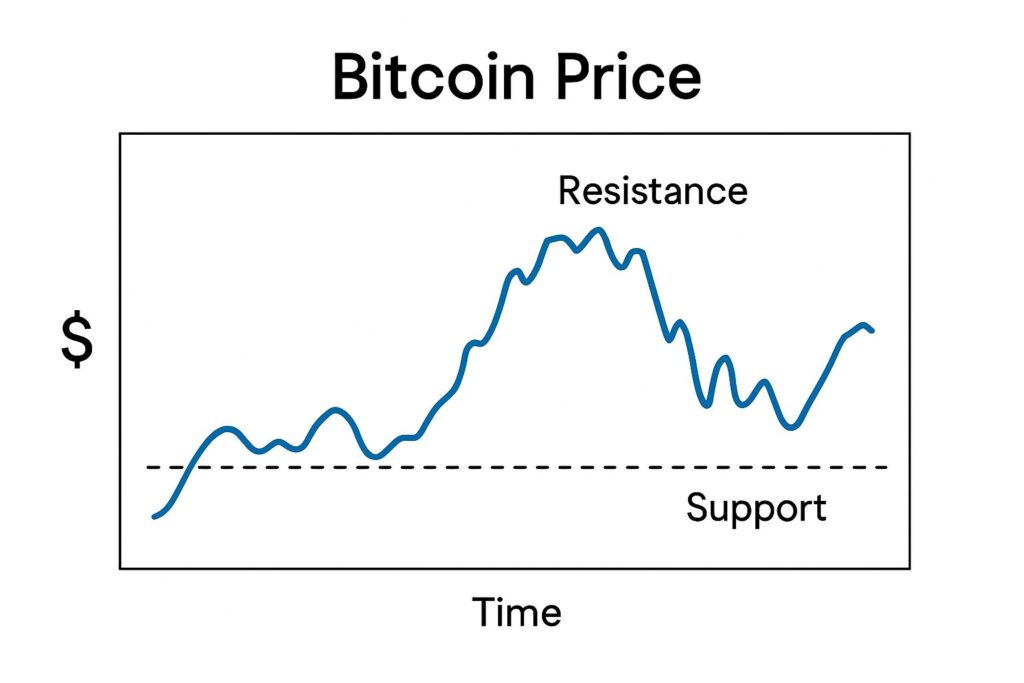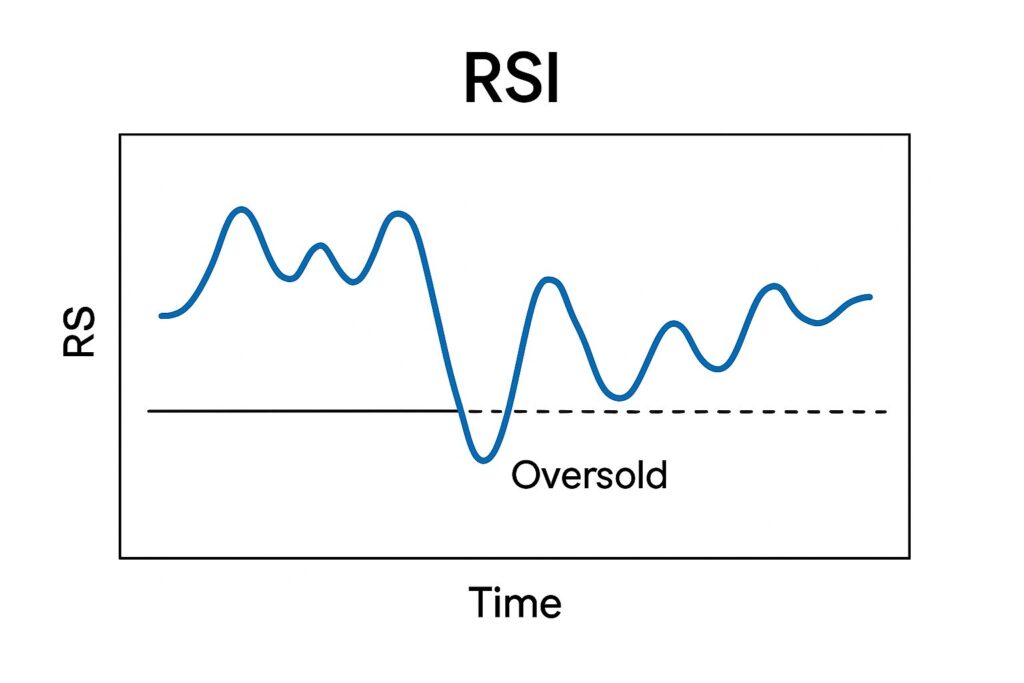Main Points :
- The largest cryptocurrency, Bitcoin (BTC), remains under pressure despite on-chain indicators showing oversold conditions.
- Market focus is shifting to the Federal Reserve’s December policy decision, with growing odds that a rate cut will not occur.
- Macro headwinds—including hawkish Fed signals, delayed U.S. labor data, and risk-asset de-leveraging—are weighing on crypto markets.
- Technical and on-chain metrics suggest potential for a relief rally, but broader trend remains bearish until key resistance is broken.
- For blockchain and altcoin investors, the current environment may present accumulation opportunities—but risk remains elevated and strategic discipline is required.
1. The Current State of Bitcoin and On-Chain Signals
Over the past week, Bitcoin continued to search for support, trading in the mid-¥13 million range in the Japanese market (roughly USD $88,000 assuming ¥150 = $1). According to the Japanese article referenced, the market remains in a weakness phase despite significant oversold signals.
On-chain data highlighted: monthly transaction counts, active addresses, mining pool outflows, and exchange/institution flows—all showing that selling pressure has been heavy. Regardless, the anticipated bounce failed to materialise. The article noted that even the daily RSI flagged oversold status, yet BTC did not reverse.
From global sources: analysis shows Bitcoin’s market structure is indeed oversold: one article states that BTC-USD has major resistance at ~$97,500 and support at ~$89,000. Another source noted that a -30% correction off highs has occurred with little clear trigger, signalling weak structural positioning. On-chain, institutional holdings remain strong (for example, a major institution increasing BTC holdings) even as spot and exchange flows show pressure.

Thus, for market participants looking for new assets or blockchain use cases, the message is: yes, conditions may favour accumulation, but the macro backdrop and technical landscape remain challenging.
2. Macro Environment: Fed Policy and Risk-Off Dynamics
A key theme emerging from the Japanese article is the growing realism that the Fed may hold rates in December rather than cut them. The minutes from the October FOMC meeting indicated many participants favour a December hold due to data uncertainty (especially around the U.S. government shutdown and labor data delays). From the article: “many participants supported a hold in December and were concerned about policy decision-making due to asymmetric information from government agency shutdown.”
External commentary supports this: one piece shows the odds of a December cut have plunged to ~33% from earlier ~70%. Another notes that hawkish Fed signals—together with delayed data releases—have elevated macro risk for Bitcoin and alts.
In addition to monetary policy, broader risk sentiment is fragile. Crypto is behaving like a high-beta tech asset, highly correlated with equities (notably the Nasdaq Composite). When tech or AI valuations wobble, crypto suffers.
For someone interested in crypto as a practical blockchain or asset play, the takeaway is that macro policy remains a dominant driver, reducing the independence of crypto from broader finance.
3. Technical Setup and Market Structure
Let’s break down the technical picture: according to the global analysis, Bitcoin’s 50-day moving average has crossed below the 200-day—a “death cross”—indicating a bearish medium-term trend. The support zone around ~$89,000 is critical: a breakdown could lead to ~$83,000 or lower. Meanwhile, resistance clusters near ~$97,500 and ~$105,000.
Another analysis labels the recent ~US$87,000 rebound a “bear market bounce” rather than a genuine trend reversal. Inside those metrics: the RSI is very low, signalling oversold, but oversold does not guarantee reversal—especially under macro headwinds.

From the Japanese article: Though on-chain supply/demand metrics are deeply bearish (i.e., strongly sold), Bitcoin could not stabilise despite oversold signals. The interplay of risk assets and tech exposure remains the tailwind or headwind.
For an investor searching for new crypto revenue sources: this suggests caution. The opportunity may lie in selective accumulation, not broad speculation. Also, understanding support/resistance and waiting for confirmation may be critical.
4. What This Means for Altcoins, Blockchain Use Cases and Income Opportunities
While the article focuses on Bitcoin, the implications ripple out to altcoins and blockchain projects. If Bitcoin is constrained, altcoins typically underperform or suffer deeper drawdowns. The hawkish macro environment plus risk aversion makes smaller-cap tokens more vulnerable.
However, oversold conditions in Bitcoin may signal a window of opportunity for select projects—particularly those with real utility or niche adoption. For example: Layer-2 protocols, DeFi infrastructure, tokenised assets, on-chain payments platforms. With Bitcoin stuck near support, capital may slowly rotate to these alternatives if trust in broader crypto rebounds.
From the global piece: “While an oversold relief rally is possible, alts remain vulnerable; during sharp risk-asset sell-offs, cryptocurrencies tend to auto-correlate toward 1.” In other words, until Bitcoin stabilises, altcoins likely remain hostage to its performance.
For your interest—investors looking for new assets and practical blockchain use—this suggests a tiered approach: maintain core exposure to Bitcoin (or liquid large-cap crypto) while scanning for projects with genuine on-chain adoption, low correlation, and real value drivers. But remain aware that timing matters and macro factors will dominate short term.
5. Strategic Implications & What to Watch
Given the condition described, here are strategic implications and key watch-points:
Accumulation Opportunity or Bear Trap?
- The heavily sold on-chain indicators support the notion of an accumulation window.
- But with macro policy uncertain and technicals still weak, a false bottom remains possible.
- The “time to accumulate” may be near—but only if certain signals align.
What signals to monitor:
- Policy: Does the Fed signal a hold or begin to hint at cuts? If December policy turns hawkish, risk assets (including crypto) might continue downward.
- Bitcoin: Can BTC break above ~$97,000 or ~$105,000 with volume and stay above key EMAs? That would argue for a trend shift.
- Technical confirmation: Does Bitcoin close above its 200-day MA and maintain momentum? Or does it break below $89,000?
- On-chain flows: Are there large inflows into exchanges (bearish) or continued accumulation by institutions (bullish)?
- Altcoin divergence: Do select projects decouple from Bitcoin’s weakness and show independent adoption? That may open new revenue streams.
Practical for blockchain practitioners:
- If you are building or evaluating projects (e.g., your interest in “non-custodial wallet” or token issuance), this environment suggests more selective partner choices and focus on real usage rather than hype.
- For token launches or ICOs: given macro caution, marketing and timing matter. Projects that can demonstrate utility (payments, swaps, on-chain volume) may fare better than speculative tokens.
- For income strategies (staking, yield): ensure you understand protocol risk and macro hedging—because even strong projects can get pulled lower by systemic risk.
6. Conclusion
In summary: Bitcoin’s current state is a complex mixture of heavy oversold signals and a macro environment that remains challenging. The expectation that the Fed may not cut rates in December is increasingly shaping market sentiment. For the crypto investor or blockchain practitioner seeking new assets or revenue streams, this means we may be closer to a bottoming phase—but the trend has not yet reversed.
Until Bitcoin breaks above resistance with confirmed momentum and macro policy turns more supportive, caution remains warranted. That said, the oversold condition does suggest that selective accumulation—especially among utility-driven blockchain projects—could provide asymmetric upside.
In short: you can use this phase to position for the next cycle, but treat it as a strategy rather than a speculative gamble. Monitor the key signals, avoid excessive leverage, and keep your focus on real on-chain utility and macro sensitivity. The next leg up will reward discipline, not blind optimism.

